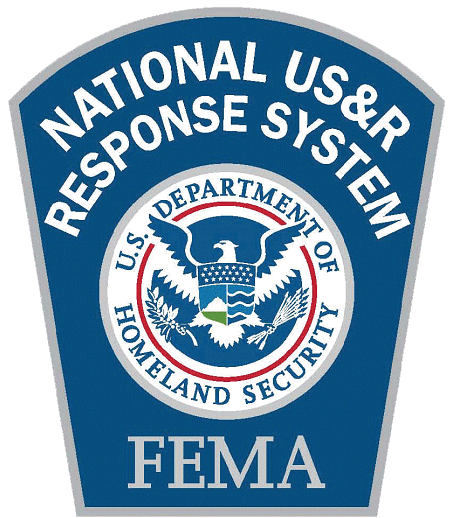Urban Search & Rescue
Urban search and rescue (US&R) involves the location, rescue (extrication), and initial medical stabilization of individuals trapped in confined spaces. Structural collapse is most often the cause for people being trapped, but individuals may also be trapped in transportation accidents, mines, and collapsed trenches.
Urban search and rescue is considered a "multi-hazard" discipline, as it may be needed for a variety of emergencies or disasters, including earthquakes, hurricanes, typhoons, storms, tornadoes, floods, dam failures, technological accidents, terrorist activities, and hazardous materials releases. The events may be slow in developing, as in the case of hurricanes, or sudden, as in the case of earthquakes.
Urban Search & Rescue Participants
There are many participants in the National Urban Search and Rescue Response System. These participants can be grouped into three main categories.
-
FEMA - establishes policy and leads the coordination of the national system
-
Task Forces - there are 28 FEMA US&R Task Forces spread throughout the continental United States trained and equipped by FEMA to handle structural collapse.
-
Incident Support Teams - support the US&R Task Forces in accomplishing their mission through logistical, electronic and coordination expertise.
Urban Search & Rescue Training

Training requirements are intensive, to say the least. In addition to being an emergency medical technician, each task force member must complete hundreds of hours of training. Specialties such as canine search, rescue, and rigging carry their own training requirements.
Training to perform Urban Search and Rescue (US&R) is hazardous and should only be undertaken by competent individuals under the supervision of instructors skilled in the various functional disciplines involved. FEMA does not certify training delivered outside the direct control of the agency.
Task Force Equipment

FEMA has created a standardized list of equipment that each Task Force maintains. The 16,400 pieces of equipment are cached and palletized for quick access and transportation. The complete load of equipment weighs 60,000 pounds (27,215 kg) and is designed to be transported by tractor trailer or in the cargo hold of transport aircraft.
The equipment cache allows the Task Force to operate independently for up to four days. The cache contains five categories of equipment: Medical, Search and Rescue, Communications, Technical Support and Logistics.

